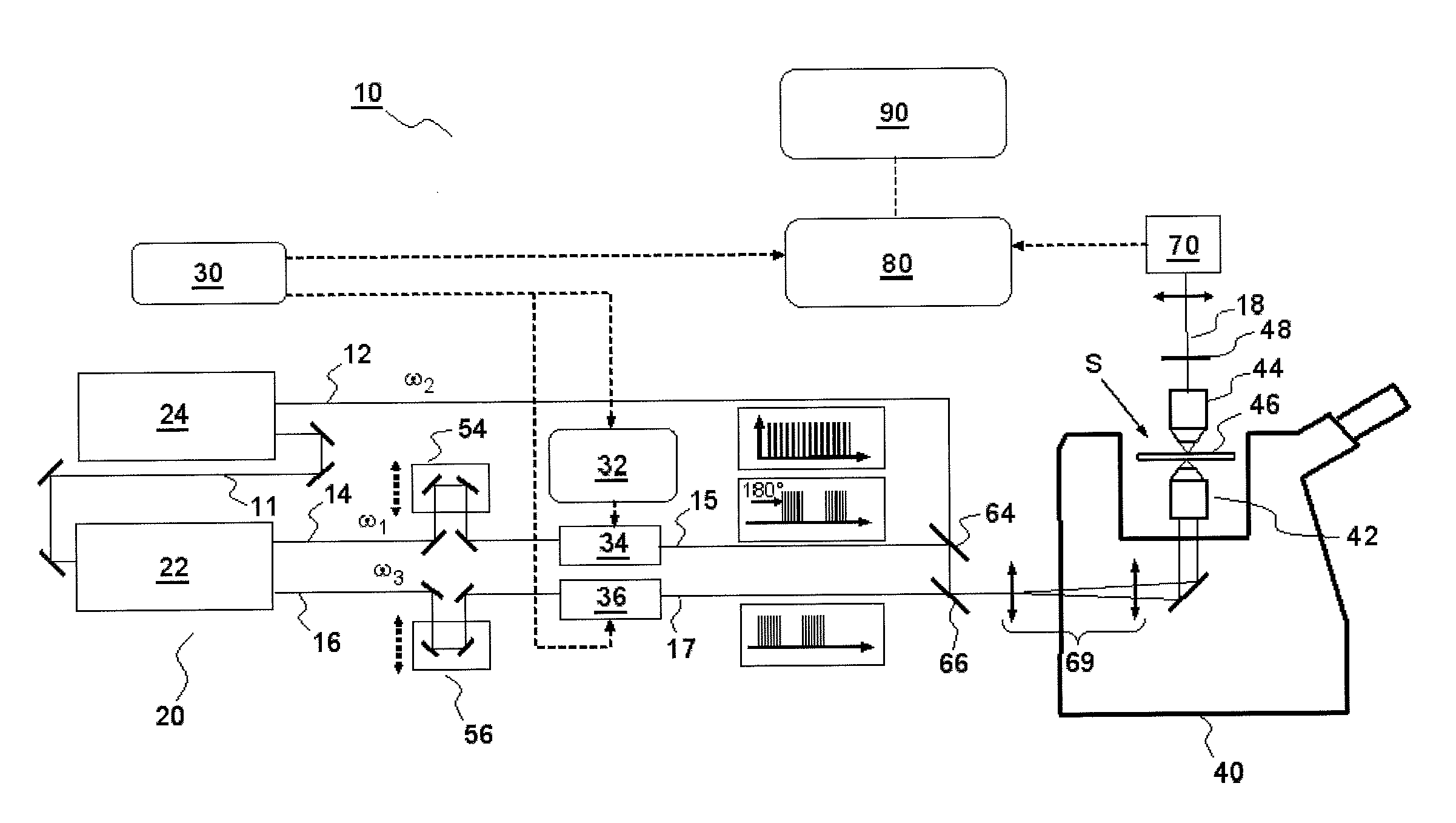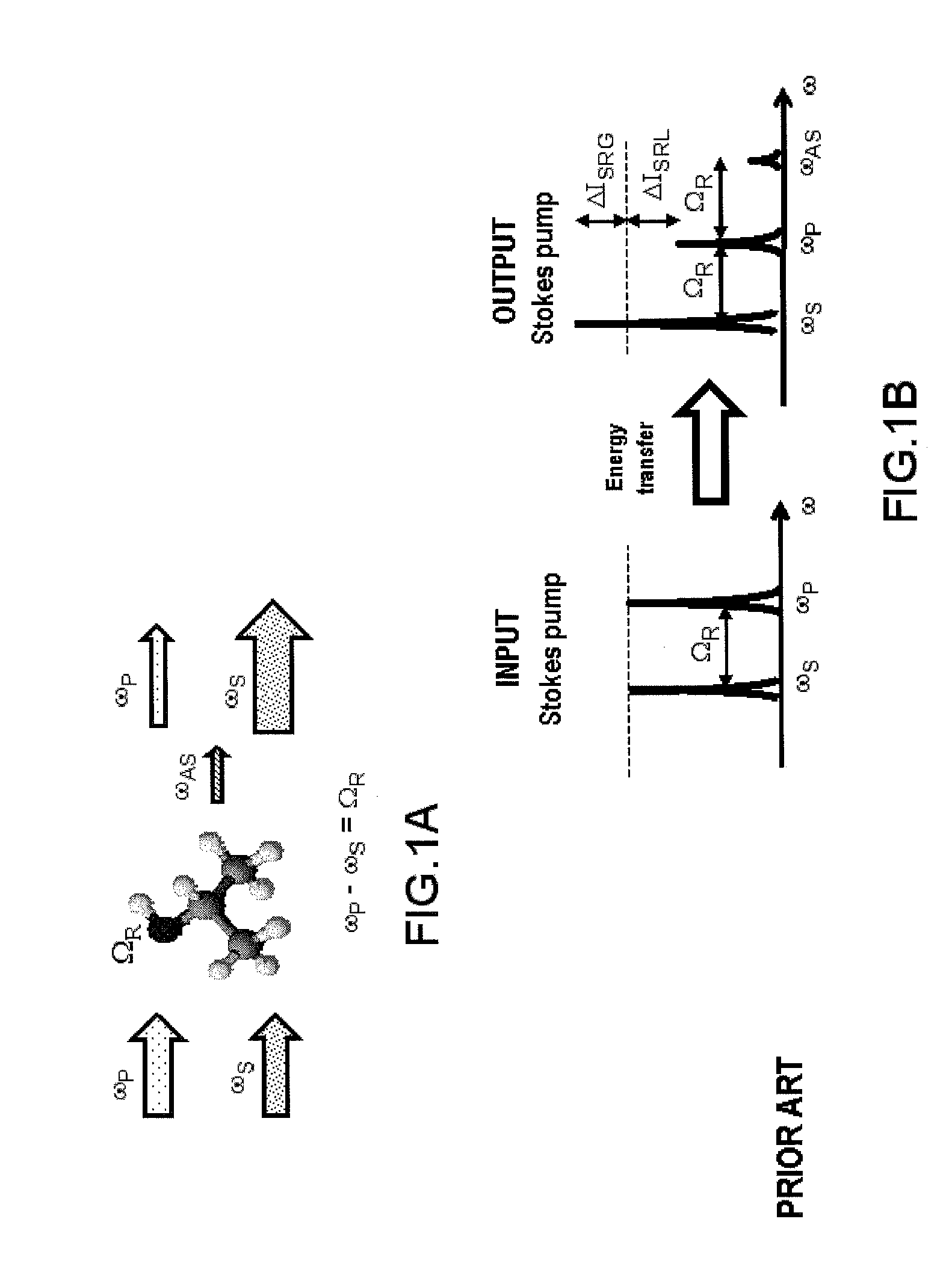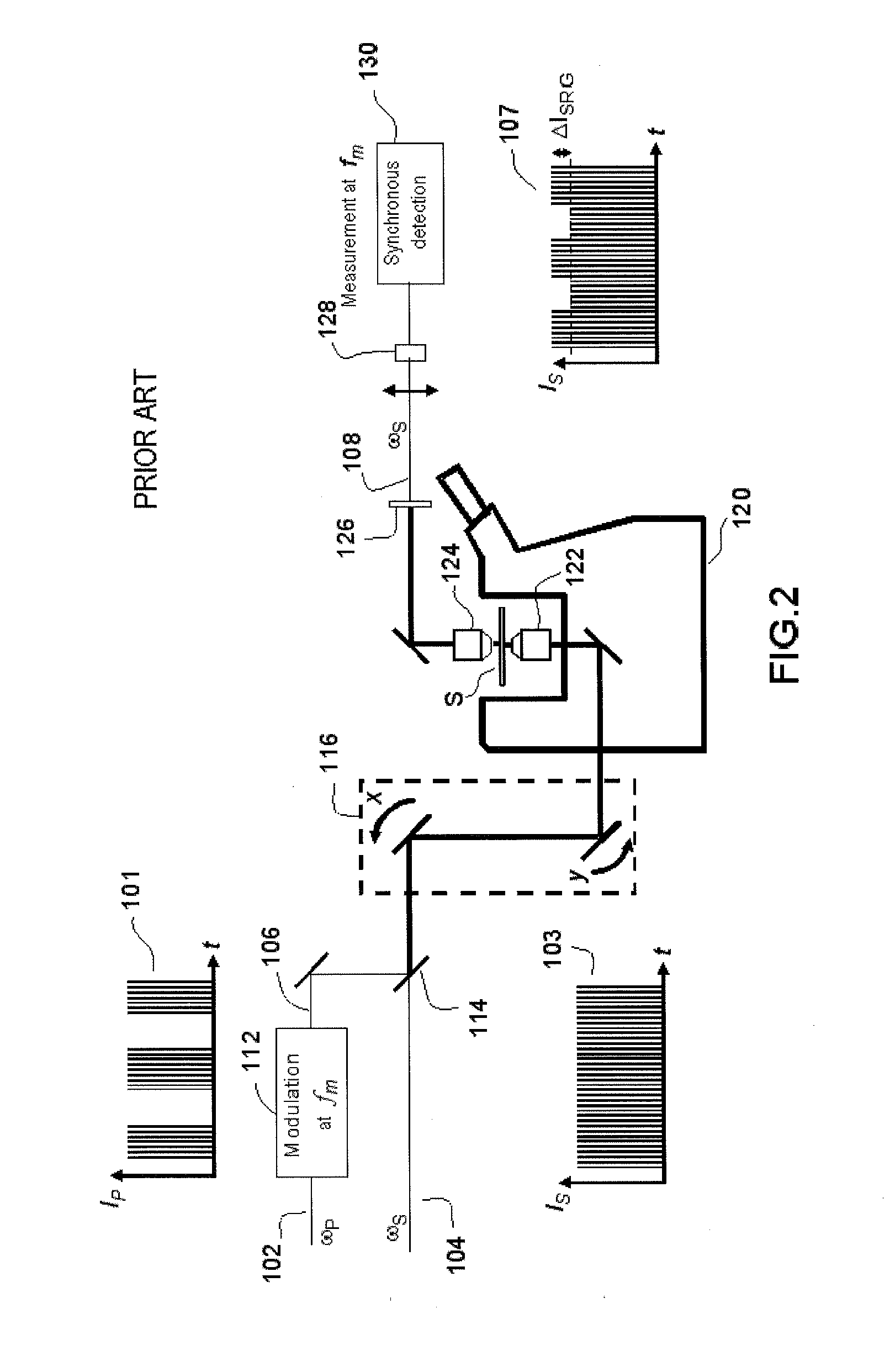Device and method for stimulated Raman detection
a technology of stimuli and raman, applied in the field of devices, can solve the problems of low repetition rate (1 khz) that is not suitable for biological imaging, and the detection field is differen
- Summary
- Abstract
- Description
- Claims
- Application Information
AI Technical Summary
Benefits of technology
Problems solved by technology
Method used
Image
Examples
Embodiment Construction
[0059]In the figures, identical elements are indicated by the same references.
[0060]FIG. 4 shows an example of a device for detecting a non-linear resonant SRS optical signal according to one variant of the present invention, implementing amplitude modulation.
[0061]The detection device 10 comprises a source 20 for emitting trains of pulses centered on the angular frequencies ω1, ω2 and ω3, such that ω2−ω1=ω3−ω2=ΩR where ΩR is a molecular vibrational resonant frequency that it is sought to analyze in a sample S. The pulses are for example picosecond pulses, of a few cm−1 in spectral width, or may be frequency chirped pulses as will be described in more detail below. Typically, the trains of pulses for example comprise pulses of a few picoseconds, emitted at rates of a few tens of MHz, for example about 80 MHz, for a length of time of about one microsecond.
[0062]According to one variant, the emitting source 20 comprises a laser system consisting of a master laser 24 emitting trains 12...
PUM
| Property | Measurement | Unit |
|---|---|---|
| length of time | aaaaa | aaaaa |
| wavelengths | aaaaa | aaaaa |
| wavelengths | aaaaa | aaaaa |
Abstract
Description
Claims
Application Information
 Login to View More
Login to View More - R&D
- Intellectual Property
- Life Sciences
- Materials
- Tech Scout
- Unparalleled Data Quality
- Higher Quality Content
- 60% Fewer Hallucinations
Browse by: Latest US Patents, China's latest patents, Technical Efficacy Thesaurus, Application Domain, Technology Topic, Popular Technical Reports.
© 2025 PatSnap. All rights reserved.Legal|Privacy policy|Modern Slavery Act Transparency Statement|Sitemap|About US| Contact US: help@patsnap.com



